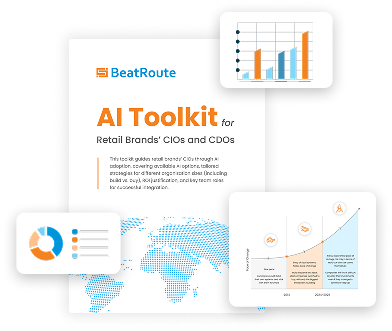Revenue Growth KPI

Revenue Growth is one of the most vital KPIs for any consumer goods brand. It reflects a company’s ability to increase sales over time and is directly tied to business expansion, market success, and financial health. In the retail industry, revenue growth not only validates the strength of your product strategy but also your execution excellence on the ground.
Why It Is Important for Retail Brands to Track It
Tracking revenue growth helps brands:
- Make data-backed decisions about territory expansion and SKU prioritization
- Stay competitive in dynamic markets
- Forecast future demand and optimize supply chain planning
- Allocate resources more effectively to high-performing channels or regions
How to Measure Revenue Growth
Formula:
Revenue Growth (%) =
((Current Period Revenue – Previous Period Revenue) ÷ Previous Period Revenue) × 100
Example:
If Q2 revenue is ₹12 Cr and Q1 revenue was ₹10 Cr:
((12 – 10) ÷ 10) × 100 = 20% Revenue Growth
Strong performance means consistent, double digit growth driven by either higher sales volumes, better prices, or both.
What Drives Revenue Growth?
Two primary sub-KPIs directly impact Revenue Growth:
- Volume Growth: More units sold increases total revenue
- Average Selling Price (ASP): Higher per unit prices contribute more revenue per sale
Sub-KPI 1: What Is Volume Growth?
Definition
Volume Growth tracks the increase in quantity of products sold compared to a past period.
Example:
If you sold 5,000 units last month and 6,000 this month, you’ve achieved 20% volume growth.
Why It Matters
- Shows demand pull and market penetration
- Indicates distribution health and outlet reach
- Reflects success of in-store execution and promotions
How It’s Measured
Volume Growth (%) =
((Current Units – Previous Units) ÷ Previous Units) × 100
Example:
((6,000 – 5,000) ÷ 5,000) × 100 = 20%
How to Achieve It
- Increase numeric and weighted distribution across outlets
- Ensure regular visit plans to avoid stockouts
- Run targeted schemes or combos to boost offtake
- Improve on-shelf visibility and share of space
Sub-KPI 2: What Is Average Selling Price (ASP)?
Definition
ASP tells you how much revenue is earned per unit sold, on average.
Example:
If revenue is ₹5 Cr and volume sold is 10 lakh units:
5,00,00,000 ÷ 10,00,000 = ₹50
Why It Matters
- Helps optimize margins without relying solely on volume
- Indicates pricing power and brand value perception
- Critical during inflation or cost push phases
How It’s Measured
ASP =
Total Revenue ÷ Total Units Sold
How to Achieve It
- Drive sales of premium or high MRP SKUs
- Control deep discounting at the last mile
- Focus on profitable channels and regions
- Educate field teams on smart upselling techniques
How These Sub-KPIs Drive Revenue Growth
Both sub-KPIs are levers for boosting total revenue.
- High Volume + Stable ASP = Broad market capture with steady margins
- Moderate Volume + Higher ASP = Profitable growth from premium segments
- High Volume + High ASP = Ideal scenario of scale + value
Even if one sub-KPI stays flat, improving the other can still drive revenue growth.
How to Drive Execution at Scale
To consistently hit sub-KPI targets:
- Set outlet-level goals for volume and premium SKU contribution
- Use beat plans that prioritize coverage gaps and high potential stores
- Track scheme uptake, strike rate, and conversion daily
- Review field actions and course correct instantly
How BeatRoute Can Help
This is where BeatRoute’s Goal-Driven AI framework comes in.
- Set revenue growth goals for your teams and channel partners
- Empower them with agentic AI workflows to drive revenue growth as a KPI
- Gamify them to improve their input behavior in the market
- Solve revenue growth challenges with BeatRoute Copilot
Conclusion
Revenue growth is the clearest signal of success for a consumer goods brand. But it’s not just about selling more, it’s about selling smart. By breaking it down into Volume Growth and ASP, teams get clarity on what levers to pull. With consistent field execution, strong local goals, and the right visibility, driving revenue growth becomes a repeatable outcome, not a lucky spike.
👉This KPI is a core execution metric recognized across the global consumer goods and FMCG industry. It is widely used to measure field performance, outlet-level impact, and sales execution effectiveness. Tracking this KPI helps retail brands align local and national execution with broader business goals like growth strategy, market expansion, and profitability.
About the Author
-
Kanika Agrawal owns deep first-hand market experience ranging from global corporations to startups, where she has contributed to building and scaling solutions that drive measurable business impact. She possesses strong expertise in AI and focuses on translating its capabilities into real business value.
Use Goal-Driven AI to Achieve Retail Sales Uplift, Today!
Join enterprises in 20+ countries that trust BeatRoute, the globally dominant AI platform for sales force automation, field sales, DMS, and eB2B
Latest Insights & Articles
Here are the most impactful articles, platform updates, ebooks and reports for you.


